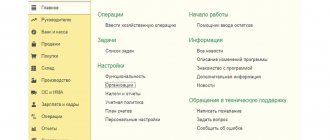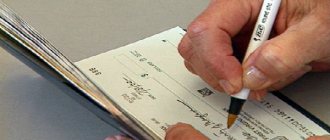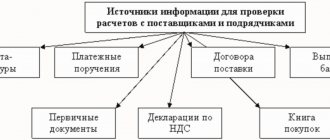Regulation of cash transactions
Cash flow is typical for almost all enterprises and individual entrepreneurs.
The specifics of conducting cash transactions are enshrined in the instruction of the Central Bank of the Russian Federation No. 3210-U dated March 11, 2014. The document regulates the registration and accounting of cash flows of economic entities. Since November 30, 2020, the document has been in effect in a new edition, which has introduced a significant number of changes. For example, cashiers are required to accept worn-out banknotes, but they can no longer be issued. They will have to be handed over to the bank. The description of such banknotes is given in the table:
ConsultantPlus experts told us what other innovations in the procedure for recording cash transactions came into effect on November 30, 2020. Get trial access to the K+ system and go to the review material for free.
Currently, there is still a need to independently determine the cash settlement limit each year. However, for small businesses and individual entrepreneurs the obligation to set a cash limit has been abolished. They no longer need to monitor their cash balance on a daily basis.
For more details, see the article “Cash discipline - cash balance limit for 2021 - 2021”.
Read about other nuances of working with cash:
- “Nuances of documenting cash transactions”;
- “What is the procedure for preparing cash documents?”;
- “What is the limit for cash payments between legal entities?”
Transaction accounting
Any accounting is carried out using certain corresponding accounts, which form the main cash transactions. The main account involved in cash transactions is the account. 50. It is active, that is, the balance in the presence of resources is exclusively debit. All receipts are reflected in debit, and all expenses in credit. The balance is calculated using the following formula: balance at the beginning of the reporting period + debit turnover + credit turnover.
Postings to the cash register are presented in two sections: income and expense. The receipt of funds at the cash desk may have different entries due to different accounts corresponding to the credit, but the debit will always have an account of 50. The same algorithm applies to disposal: for a loan there is always an account of 50, and for a debit - a corresponding account.
And further in the table the most typical accounting entries for the cash register are presented.
Table - Cash accounting, postings to account 50
| The essence | D-t | Kit |
| Received to the cash register from the current account transaction | 50 | 51 |
| Advance received from buyer | 50 | 62 |
| Resources have been credited to previously issued claims. | 50 | 75-1 |
| A refund was made of the accountable amount that was not spent | 50 | 71 |
| Transfer of fixed assets for cash | 50 | 91-1 |
| Salaries paid to employees | 70 | 50 |
| Loan provided to employee | 73-1 | 50 |
| Deposited amount released | 76-4 | 50 |
These are the kinds of accounting entries that the cash desk has in almost every institution. The difference may lie in the analytics.
Speaking about the features of accounting, one cannot fail to mention settlements with accountable persons. This is one of the main elements that makes up this nomenclature.
The accountant should always keep track of the fact that all accountable amounts must have documentary evidence of expenses. In this case, the person is obliged to report within three days after the expenses are incurred. When issuing funds, the cashier must make sure that the subject has fully accounted for the previous advance to the organization.
It should be noted that there are those small businesses that operate in the retail sector and in most cases use cash. Then the postings to the cash register for retail revenue look like this:
Receiving proceeds from sales:
D-t 50; Kit 90-1;
VAT is charged on products sold:
D-t 90-3; Kit 68;
Cost of goods sold written off:
D-t 90-2; Kit 41;
In this case, you can initially use count 68, in which case the reflection will be as follows:
Revenue from sales reflected:
Dt 62-1; Kit 90-1;
The delivery debt is repaid by the buyer:
D-t 50; Kit 62-1;
Thus, at first glance, seemingly simple calculations at the cash desk have a number of their own features and rules, compliance with which is strictly mandatory. The employee must always be careful to avoid mistakes.
Similar articles
- Accounting of cash transactions
- Cash accounting at the enterprise
- Accounting for monetary documents
- Journal of registration of incoming and outgoing cash orders
- Fine for violation of cash discipline from 2016-2017
Cash documents
Two types of cash orders are recognized as cash documents: expenditure and receipt. The forms of these forms are unified and approved by law. The procedure for filling out cash orders does not allow corrections or blots to be made - with them the document becomes invalid.
Orders are registered in the cash order register.
And the main register for the cash register is the cash book.
Find out also:
- is it possible to make corrections to the cash book;
- how to make an extract from the cash book.
Check whether you are completing cash transactions correctly with the help of explanations from ConsultantPlus. If you do not have access to the K+ system, get a trial online access for free.
Cash register: what is it for?
All payments that are carried out through the cash desk of an enterprise are called cash payments in accounting and must be carried out in compliance with certain regulations.
Features of cash transactions:
- All transactions must be carried out only taking into account the cash limit. This is the restriction on the place of storage of funds that cannot be exceeded in the company;
- All expenses and receipts must be made only on the basis of primary documentation, including the use of receipt and expense cash order forms;
- It is not allowed to issue funds for purposes that were not provided for when the resources arrived.
I would like to pay special attention to the cash register limit. This is the amount of funds that can be stored in a given location for more than one day. The amount in excess of the established limit must be submitted to the bank on the basis of documents and credited to the current account. The exception is those amounts intended to pay wages and social benefits.
At the end of the working day, the accountant must prepare an expense order and transfer the money to the financial institution. Such postings to the cash register and current account must be made in the following format: D-t 50, K-t 51.
You should also note that cash is issued only for certain needs, including:
- Payment of wages to company personnel;
- Social benefits: financial assistance, vacation pay, etc.;
- Travel expenses for employees;
- Various household needs.
All other movements should occur only on the current account in non-cash form. This is approved by law.
It is also important to know that cash payments must be made through a special machine. And only for individual entrepreneurs there is an exception: they can do this without a machine, but using strict reporting forms.
The cashier himself creates and maintains primary documentation. It is important to know that corrections are not permitted on these forms.
Among the main documents are the following:
- Receipt cash order. Reflects all receipts;
- Withdrawal slip. Provides for the processing of any cash withdrawal;
- Registration log of PKO and RKO. Each cashier is obliged to register completed orders, indicating their number and date of preparation;
Cash book. A consolidated record of amounts issued and received is maintained. Such a book must be bound at the enterprise, the sheets must be numbered, and at the end there must be a seal of the organization indicating the number of sheets available.
Debit 99 Credit 91 means
Responsibility for failure to comply with cash discipline
Business entities are responsible not only for the correct execution of cash documents, but also for the completeness of cash receipts. The statute of limitations for violations of cash transactions is short and is only 2 months. The tax office has the right to hold violators administratively liable if errors are discovered. According to paragraph 1 of Art. 15.1 of the Code of Administrative Offenses of the Russian Federation, the fine for organizations can reach 50,000 rubles. For individual entrepreneurs and managers under the same article, fine payments will amount to 4,000–5,000 rubles.
For more information about the level of responsibility, see the material “Are your cash discipline in order?”
ConsultantPlus warns: Violation of the rules for working with cash and the procedure for conducting cash transactions is a violation of cash discipline. What it is expressed in and what sanctions are provided for it, see K+. Trial access is available for free.
Individual entrepreneurs are exempt from full-fledged cash transactions with the establishment of a cash limit and the use of strict unified forms of documents. But if entrepreneurs still work in the course of their activities with cash settlement and payment services, then they must be filled out in accordance with all the rules.
Results
The cash register is an important area that is present in the accounting records of almost every business entity.
Therefore, every accountant should know the correspondence schemes for cash accounting accounts. Also, do not forget that cash register documentation is strictly unified and filled out in accordance with the normative procedure, and violations of cash discipline are fraught with fines. You can find more complete information on the topic in ConsultantPlus. Free trial access to the system for 2 days.
Types of funds stored in the cash register
The following are subject to accounting through accounting account 50, allocated to reflect the funds in the cash register (Chart of Accounting Accounts, approved by Order of the Ministry of Finance of the Russian Federation dated October 31, 2000 No. 94n):
- money in Russian and foreign currencies;
- monetary documents.
In accounting, money is necessarily divided by type of currency. In this case, foreign currencies are taken into account in two equivalents (foreign and Russian) and recalculated at their exchange rates on the dates of transactions and on the date of preparation of accounting reports (clause 4-8 of PBU 3/2006, approved by Order of the Ministry of Finance of Russia dated November 27, 2006 No. 154n) .
Another principle of division is based on the location of the cash registers. In addition to the main cash register, an organization or individual entrepreneur may have operational cash desks that work with customers at their locations remote from the location of the main cash register (i.e., in separate divisions). Money received in the operating cash desk is handed over to the main cash desk daily or at certain intervals, but can also be transferred directly to the bank if a separate division is vested with such a right. In this case, compliance with the cash balance limit is of particular importance.
Monetary documents listed in the cash register include those paid for but not received by the person who will use them:
- stamps (postage, bills of exchange, state duties);
- travel tickets;
- vouchers;
- Gift certificates.
Cash documents are taken into account according to the actual costs of their acquisition, but in accounting they must be divided by type.
In order for all the rules for dividing the objects to be taken into account to be carried out correctly, the corresponding sub-accounts are allocated on account 50. The main ones are the Instructions for the Chart of Accounts (approved by Order No. 94n):
- 1 - corresponding to the types of the main cash register;
- 2 - corresponding to operating cash desks;
- 3 - intended for monetary documents.
However, each of these subaccounts can be divided additionally - based on the principles requiring their division.






